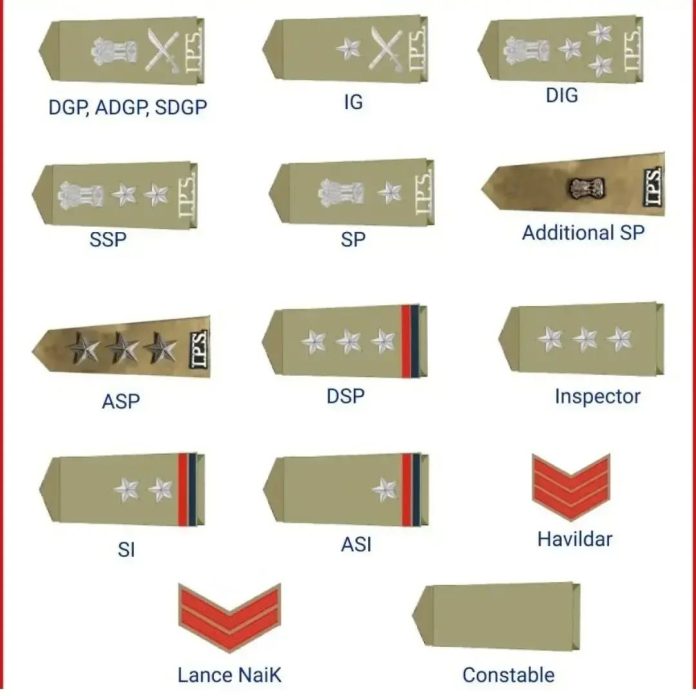In India, the police force is structured in a hierarchical manner, with various ranks signifying levels of responsibility and authority. Each rank comes with specific insignia that represent a police officer’s role and authority. The Indian police system is divided into three broad categories: the Indian Police Service (IPS), State Police, and Central Armed Police Forces (CAPF). Here’s an overview of the police ranks and their corresponding insignia in India.
1. Director General of Police (DGP)
- Role: The highest-ranking officer in a state police force, DGP is in charge of maintaining law and order in the state.
- Insignia: The DGP’s insignia consists of the Ashoka Chakra, which is a symbol of national integrity.
2. Additional Director General of Police (ADGP)
- Role: Senior to the DGP, the ADGP assists with overall administration and policy making at the state level.
- Insignia: They wear a similar insignia to the DGP, with slight distinctions in epaulette design.
3. Inspector General of Police (IGP)
- Role: The IGP is responsible for a range of administrative duties at regional police levels.
- Insignia: IGPs wear a star along with the Ashoka Chakra insignia.
4. Deputy Inspector General of Police (DIG)
- Role: Below the IGP, a DIG oversees police divisions and supports the IGP in maintaining law and order.
- Insignia: The DIG wears a star insignia that signifies their position.
5. Senior Superintendent of Police (SSP)
- Role: SSPs oversee law enforcement in a district and are crucial in maintaining public safety.
- Insignia: They have a star with a distinct crown emblem on their uniform.
6. Superintendent of Police (SP)
- Role: The SP is responsible for overseeing police functions at the district level.
- Insignia: The SP’s rank insignia typically includes a silver star.
7. Additional Superintendent of Police (Addl. SP)
- Role: This officer assists the SP and handles special assignments.
- Insignia: They wear a silver star with an additional distinction, marking their assistant role.
8. Deputy Superintendent of Police (DSP)
- Role: The DSP is typically in charge of a sub-division or district police unit.
- Insignia: DSPs wear a silver star.
9. Inspector
- Role: Inspectors lead police stations and supervise investigations.
- Insignia: Inspectors wear two stars in their insignia.
10. Sub-Inspector (SI)
- Role: Sub-Inspectors are in charge of law enforcement at the police station level.
- Insignia: They wear a single star on their uniform.
11. Assistant Sub-Inspector (ASI)
- Role: The ASI assists the SI and manages police work in a specific section.
- Insignia: The ASI insignia consists of a single chevron or strip.
12. Head Constable (HC)
- Role: Head constables are the senior most among constables and supervise them.
- Insignia: The insignia for HC includes a single chevron, similar to the ASI.
13. Constable
- Role: Constables are the most junior officers, tasked with maintaining law and order on the ground.
- Insignia: Constables do not have any rank insignia, but their uniform reflects their basic level in the hierarchy.
The rank structure in the Indian police is designed to ensure effective law enforcement at various levels, from the national to the local level. The distinct insignia helps differentiate officers based on their roles and responsibilities.

